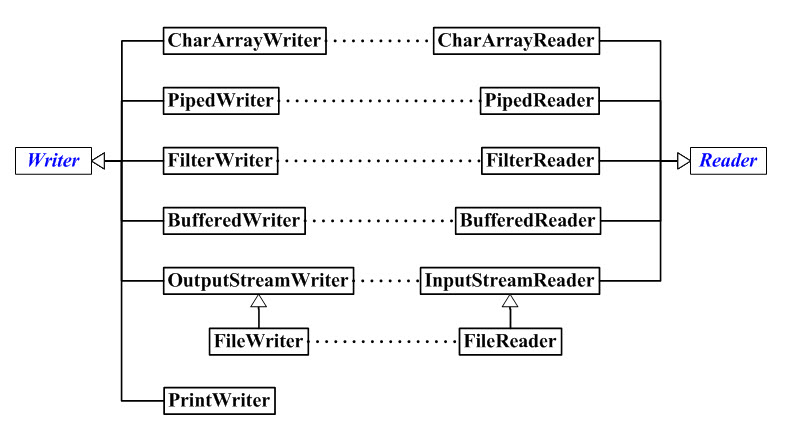IO
遍历文件夹
1 public static List<String> listAllFile(String path){ 2 File file=new File(path); 3 File[] temp=file.listFiles(); 4 for(File fs:temp){ 5 if(fs.getName().equals("$RECYCLE.BIN")){ 6 continue; 7 } 8 if(fs.isDirectory()){ 9 listAllFile(fs.getAbsolutePath()); 10 }else{ 11 String filename=fs.getName(); 12 if(Pattern.matches(".*jpg$", filename)){ 13 list.add(fs.getAbsolutePath()); 14 } 15 } 16 } 17 return list; 18 }
复制路径下的所有图片到某位置
1 package File; 2 3 import java.io.File; 4 import java.io.FileInputStream; 5 import java.io.FileOutputStream; 6 import java.util.ArrayList; 7 import java.util.List; 8 import java.util.Random; 9 import java.util.regex.Pattern; 10 11 public class TransferPhoto { 12 13 private static List<String> list=new ArrayList<>(); 14 15 public static void main(String[] args) { 16 // TODO Auto-generated method stub 17 //输入 18 String inputURL="G:/software/YJHAS"; 19 //输出 20 String outputURL="F://photo"; 21 listAllFile(inputURL); 22 File file=new File(outputURL); 23 file.mkdirs(); 24 int lenght=list.size(); 25 int jindu=lenght/100; 26 int count=1; 27 for(String str:list){ 28 copyPhoto(str,outputURL); 29 count++; 30 if((count%jindu)==0){ 31 int temp=count/jindu; 32 if(temp%5==0){ 33 System.out.println("下载到"+temp+"%"); 34 } 35 } 36 } 37 System.out.println("success"); 38 } 39 40 public static List<String> listAllFile(String path){ 41 File file=new File(path); 42 File[] temp=file.listFiles(); 43 for(File fs:temp){ 44 if(fs.getName().equals("$RECYCLE.BIN")){ 45 continue; 46 } 47 if(fs.isDirectory()){ 48 listAllFile(fs.getAbsolutePath()); 49 }else{ 50 String filename=fs.getName(); 51 if(Pattern.matches(".*jpg$", filename)||Pattern.matches(".*JPG$", filename)){ 52 list.add(fs.getAbsolutePath()); 53 } 54 } 55 } 56 return list; 57 } 58 59 public static void copyPhoto(String str,String outputURL){ 60 61 62 File file=new File(str); 63 String reg = "[^\u4e00-\u9fa5]"; 64 str = str.replaceAll(reg, ""); 65 str=str+System.currentTimeMillis()+new Random().nextInt(2000); 66 try{ 67 68 FileInputStream fis=new FileInputStream(file.getAbsolutePath()); 69 FileOutputStream fos=new FileOutputStream(outputURL+"/"+str+".jpg"); 70 int len=0; 71 byte[] b=new byte[1024]; 72 while((len=fis.read(b))!=-1){ 73 fos.write(b); 74 } 75 }catch(Exception e){ 76 e.printStackTrace(); 77 } 78 } 79 80 }
File类的常见方法
1.创建。
boolean createNewFile(); //创建文件
boolean mkdir();创建文件夹
boolean mkdirs();创建多级文件夹。
2.删除。
boolean delete();
void deleteOnExit();在程序退出时删除文件。
3.判断。
boolean canExcute(); 判断是否可执行
boolean exists(); 文件事是否存在。
isFile();文件
isDirectory();文件夹
isHidden();//java能得到文件中的隐藏文件但是对隐藏文件时不能访问的
isAbsolute();//绝对路径即时不存在也能得到。
4.获取信息。
getName();
getPath();
getParent();
getAbsolutePath();
long lastModified();
long length(); java.io.File类用于表示文件或目录。
File类只用于表示目标文件(目录)的大小,名称,路径,并可进行是否存在的判断,还有创建和修改等,不能用于文件内容的访问
创建File对象:
File file = new File("E:/...");//文件/文件夹路径对象
File file = new File("..." ,""...);//父目录绝对路径 + 子目录名称
File file = new File("...","...");//父目录File对象 + 子目录名称
file.exists():判断文件/文件夹是否存在
file.delete():删除文件/文件夹
file.isDirectory():判读是否为目录
file.isFile():判读是否为文件夹
file.mkdir():创建文件夹(仅限一级目录)
file.mkdirs():创建多及目录文件夹(包括但不限一级目录)
file.createNewFile():创建文件
file.getAbsolutePath():得到文件/文件夹的绝对路径
file.getName():得到文件/文件夹的名字
file.String():同样是得到文件/文件夹的绝对路径等于file.getAbsolutePath()
file.getParent():得到父目录的绝对路径
String[] gdir.list():得到目录的子目录\文件的名称(不是绝对路径)
File[] dir.listFiles():得到目录的子目录\文件事是否存在。
File.createNewfile创建文本
File.mkdir创建目录
File.tostring方法打印文件全路径名称
File.list列出文件直接子目录或文件的名字
File.listFile列出直接子File对象
流
字节流

字符流

byteArrayInputStream和byteArrayOutputStream
1 /** 2 * ByteArrayOutputStream 3 * @author SiyyaWu 4 */ 5 public static void test1(){ 6 int LEN=5; 7 byte[] ArrayLetters = { 8 0x61, 0x62, 0x63, 0x64, 0x65, 9 0x66, 0x67, 0x68, 0x69, 0x6A, 10 0x6B, 0x6C, 0x6D, 0x6E, 0x6F, 11 0x70, 0x71, 0x72, 0x73, 0x74, 12 0x75, 0x76, 0x77, 0x78, 0x79, 0x7A 13 }; 14 ByteArrayInputStream bais = new ByteArrayInputStream(ArrayLetters); 15 for (int i=0; i<LEN; i++) { 16 // 若能继续读取下一个字节,则读取下一个字节 17 if (bais.available() >= 0) { 18 // 读取“字节流的下一个字节” 19 int tmp = bais.read(); 20 System.out.printf("%d : 0x%s\n", i, Integer.toHexString(tmp)); 21 } 22 } 23 24 // 若“该字节流”不支持标记功能,则直接退出 25 if (!bais.markSupported()) { 26 System.out.println("make not supported!"); 27 return ; 28 } 29 // System.out.println("skip"); 30 31 32 // bais.skip(5); 33 // byte[] buf = new byte[LEN]; 34 // bais.read(buf, 0, LEN); 35 // for(int i=0;i<LEN;i++){ 36 // int temp=buf[i]; 37 // System.out.printf("%d : 0x%s\n", i,Integer.toHexString(temp)); 38 // } 39 40 //标记 41 bais.mark(0); 42 int temp = bais.read(); 43 System.out.printf("0x%s\n",Integer.toHexString(temp)); 44 //回退到标记位 45 bais.reset(); 46 47 int temp1 = bais.read(); 48 System.out.printf("0x%s\n",Integer.toHexString(temp1)); 49 50 bais.reset(); 51 52 53 //read函数重载 54 byte[] buf = new byte[LEN]; 55 bais.read(buf, 0, LEN); 56 for(int i=0;i<LEN;i++){ 57 int temp2=buf[i]; 58 System.out.printf("%d : 0x%s\n", i,Integer.toHexString(temp2)); 59 } 60 } 61 62 63 /** 64 * ByteArrayOutputStream 65 * @author SiyyaWu 66 * @throws Exception 67 */ 68 public static void test2() throws Exception{ 69 byte[] ArrayLetters = { 70 0x61, 0x62, 0x63, 0x64, 0x65, 71 0x66, 0x67, 0x68, 0x69, 0x6A, 72 0x6B, 0x6C, 0x6D, 0x6E, 0x6F, 73 0x70, 0x71, 0x72, 0x73, 0x74, 74 0x75, 0x76, 0x77, 0x78, 0x79, 0x7A 75 }; 76 77 ByteArrayOutputStream baos = new ByteArrayOutputStream(); 78 baos.write(0x41); 79 baos.write(0x42); 80 baos.write(0x43); 81 System.out.printf("baos=%s\n", baos); 82 }
FileInputStream和FileOutputStream
1 //可以读取中文,但是可能出现乱码 2 public static void inputStreamRead() throws Exception{ 3 long startTime=System.currentTimeMillis(); 4 File file=new File("D://inputstream.txt"); 5 FileInputStream inputStream=new FileInputStream(file); 6 int length=0; 7 byte[] buf=new byte[9]; 8 while((length=inputStream.read(buf))!=-1){ 9 System.out.println(new String(buf,0,length)); 10 } 11 inputStream.close(); 12 long endTime=System.currentTimeMillis(); 13 System.out.println("经历了"+(endTime-startTime)+"ms"); 14 } 15 16 17 //可以写中文,不出现乱码 18 public static void outputStreamWrite() throws Exception{ 19 File file=new File("D://outputStream.txt"); 20 FileOutputStream fileOutputStream=new FileOutputStream(file,true); 21 String data="你好"; 22 byte[] buf=data.getBytes(); 23 fileOutputStream.write(buf,0,buf.length); 24 fileOutputStream.close(); 25 }
对于inputStreaml来说,读出的数据是一个一个字节,当读中文时,会出现乱码。使用byte数组读取的话,则由于文本中中英混杂,到处有可能出现乱码。比如byte[] buf=new byte[10] 能接受5哥汉字,但如果汉字中夹有英文,则出现乱码,如“w我的世界中”。
FileReader只能一个个读取,不能读取一行。所以我们最常用的读取中英文文本的方法是使用InputStreamReader进行解码,如下
1 public static String bufferedReader(){ 2 String str=null; 3 String temp=null; 4 try { 5 InputStreamReader isr=new InputStreamReader(new FileInputStream(new File("D://input.txt")),"utf-8"); 6 BufferedReader br=new BufferedReader(isr); 7 8 while((temp=br.readLine())!=null){ 9 str+=temp+'\n'; 10 } 11 } catch (FileNotFoundException e) { 12 // TODO Auto-generated catch block 13 e.printStackTrace(); 14 }catch (Exception e) { 15 // TODO: handle exception 16 } 17 return str; 18 } 19 20 public static void bufferedWriter(){ 21 try { 22 OutputStreamWriter osw=new OutputStreamWriter(new FileOutputStream(new File("E://abb.txt")),"utf-8"); 23 String str=bufferedReader(); 24 BufferedWriter bw=new BufferedWriter(osw); 25 bw.write(str); 26 System.out.println("success"); 27 } catch (Exception e) { 28 // TODO: handle exception 29 } 30 }



